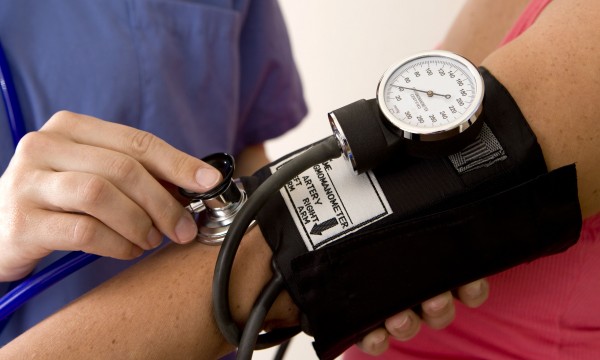You probably know the blood pressure drill. A nurse wraps the cuff of a sphygmomanometer around your arm and squeezes on a hand-held pump to inflate the cuff, cutting off the blood flow in your artery for a few seconds. Then she releases a valve that lets some of the air out of the cuff and enables your blood to flow again. A numbered dial or column of mercury on the blood pressure apparatus shows the blood pressure reading, which the nurse marks on your chart. Fancier versions work automatically with a device that automatically inflates and deflates every few minutes to monitor your pressure. The nurse then recites some numbers — 160 over 90, 120 over 80, etc. — before telling you the doctor will be right with you. But she almost never says just what those numbers mean (and you can rarely tell by the look on her face). Here are some tips on how to understand blood pressure.
- Browse Categories
- All Tips
-
Home & Garden
- All
- Appliances
- Bathroom
- Cleaning
- Crafts
- Decorating
- Electrical
- Flooring
- Furniture
- Garage Door
- Gardening
- Green Living
- Heating
- Home Alarm Systems
- Home Maintenance
- Home Remedies
- Home Security
- Home Staging
- House Sitting
- Junk Removal
- Kitchen
- Lawn Care
- Lock Systems
- Moving
- Outdoor Living
- Pest Control
- Plumbing
- Renovation
- Roofing
- Snow Removal
- Storage
- Tools
- Tree Service
- Health
- Family
- Travel
- Auto
- More Tips
Your account is now active!

How to understand blood pressure
October 9, 2015

Blood pressure from day to day
First, the numbers you hear are not set in stone.
- They change a fair amount from one doctor's visit to the next, and even from one hour to the next. Your blood pressure is not static.
- Blood pressure is generally highest in the morning and lowest at night when you're sleeping.
- One reading of "high" blood pressure is nothing to worry about. It's when you have several high readings over a relatively short period of time that you should be concerned.
The numbers
Blood pressure is measured in mmHg, or millimetres of mercury.
- The systolic reading (the top number) indicates the pressure when the left ventricle of your heart contracts. That means it's a measurement of how high your pressure is when your heart has just pushed fresh blood into the arteries.
- The diastolic reading (bottom number) indicates the pressure when the ventricle relaxes, or when blood is flowing on its own.
- The higher either of those numbers, the harder your heart is working to pump blood through your arteries.
When it comes to cardiovascular disease, systolic pressure is the one to worry about: In people over 50, pressure higher than 140 mmHg contributes more to cardiovascular disease than high diastolic pressure. Work closely with your doctor to bring your systolic pressure down, since studies have found that this is most effective at reducing blood vessel damage from hypertension. That doesn't mean you should ignore the diastolic pressure, though. If it is significantly elevated (above 120 mmHg), it's an emergency, and you may need to be hospitalized to lower it and avoid organ damage.
National advertising powered by Mediative.com. Yellow PagesTM, Walking Fingers & DesignTM, YP.caTM, Find. & DesignTM, YellowPages.caTM, Canada411TM and YP ShopwiseTM are trademarks of Yellow Pages Digital & Media Solutions Limited in Canada. All other trademarks are the property of their respective owners. Copyright © 2018 Yellow Pages Digital & Media Solutions Limited. All Rights Reserved.
More Tips
The material on this website is provided for entertainment, informational and educational purposes only and should never act as a substitute to the advice of an applicable professional. Use of this website is subject to our terms of use and privacy policy.







